
Home - Search - Browse - Alphabetic Index: 0- 1- 2- 3- 4- 5- 6- 7- 8- 9
A- B- C- D- E- F- G- H- I- J- K- L- M- N- O- P- Q- R- S- T- U- V- W- X- Y- Z
Microstar
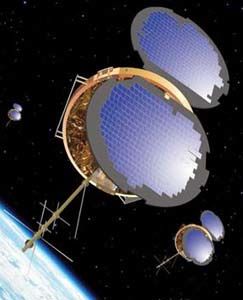 Formosat 3A FM6 Credit: Manufacturer Image |
AKA: Formosat;IBEX;Microlab;MUBLCOM;QuikTOMS. Status: Operational 1995. First Launch: 1995-04-03. Last Launch: 2008-10-19. Number: 22 . Gross mass: 43 kg (94 lb).
Notably used for the Orbcomm LEO network for global communications and related spacecraft.
Orbital's MicroStar was a commercially-produced spacecraft bus designed for multiple launch by Orbital's Pegasus or Taurus launch vehicles. MicroStar supported payloads up to 68 kg and provides a three to five-year mission life. The baseline bus was comprised of three rings stacked together vertically -- a core ring housing all primary spacecraft bus systems and a payload support module consisting of two rings and a payload mounting shelf. Payloads requiring different depths could be accommodated by using fewer rings, or by creating a custom ring. The open avionics architecture, stackable mechanical design and scalable spacecraft design maximize payload performance and flexibility.
Using a production line approach for assembly and testing, Orbital delivered over 38 MicroStar spacecraft, including 26 ORBCOMM satellites launched in 10 months in 1995-1996. This approach provided cost and schedule advantages through the use of mature designs, familiar manufacturing and test equipment, dedicated and experienced personnel, and established vendor sources. The production line remained in place to support ORBCOMM spares and individual MicroStar missions such as T1 and MUBLCOM. NASA's QuikTOMS spacecraft also took advantage of this production line.
Customers could purchase the MicroStar spacecraft alone, or as part of a turn-key service that includes operations and data delivery as well. For the OrbView-1 and OrbView-2 programs, Orbital provided end-to-end payload services. The company produced the satellite bus, integrated two payloads, and launched the satellite on Pegasus. Orbital conducted mission operations from its own ground station delivering data to principal investigators via direct downlink and the Internet. H
The MicroStar platform was originally developed to support the ORBCOMM wireless data communications system, which provided real-time, mobile, two-way data and messaging communications services worldwide. The first three MicroStar units, ORBCOMM FM-1&-2 and the OrbView-1 remote sensing satellite, were launched on a single Pegasus in April 1995.
Core Technical Specifications
- Bus Dry Mass: 58.6 kg
- Payload Mass Capability: 68.0 kg
- Redundancy: Single string
- Orbit: 700-1,000 km, all inclinations
- Launch Vehicle Compatibility: Pegasus, Taurus, SELVS I and II
- Typical Mission Lifetime: 3-5 years
- Delivery: 24 Months ARO
- Bus Dimensions (Diameter x Height): 104 x 16.5 cm
- Payload Support Module Dimensions (Diameter x Height): 104 x 33 cm
- Construction: AlBeMet/Al Honeycomb
- Shape: Dual-faced cylinder
- Power Subsystem: Payload Power: 50 W orbit average; Bus Voltage: 14 VDC unreg, 28 V reg; Solar Arrays: 2 GaAs; Batteries: 10 A-hr NiH2 CPVs
- Attitude Control Subsystem: Stability Mode 3-axis; Pointing Capabilities: Control . +/- 0.6 deg; Knowledge. < 1 deg; Rate/Stability <0.01 deg/sec
- Command & Data Handling Subsystem: Flight Processor 68302; Rad Tolerant 15 K rad; Data Storage Capacity 3 MB; Interface Architecture . RS-422/RS-485; S-Band Uplink/Downlink Rates 2 Kbps/2 Mbps
- Custom structural ring configuration for flexible payload accommodations
- Increased power (up to 270W BOL) provided by second set of solar arrays for certain orbit/payload combinations
- 1553/1773 payload data interface to accommodate existing high-level interfaces
- Reduced pointing accuracy function (10 deg accuracy per axis) for missions requiring less precision
- Payload data storage enhancement (256 MB of storage)
- Propellant capacity of 26 kg hydrazine with 4 thrusters of 0.9 N each for orbit maintenance
- Mission operations and data delivery for two years
More at: Microstar.
| Orbcomm Orbital Communications Corp, Dulles, USA. Orbcomm was a commercial venture to provide global messaging services using a constellation of 26 low-Earth orbiting satellites. Communication (Data) satellite built by Orbital Sciences Corporation (OSC) for Orbcomm, USA. Launched 1995 - 1999. Used the MicroStar bus. |
| OrbView 1 (MicroLab 1) Null |
| BATSAT (Teledesic T1) Null |
| MUBLCOM The disk-shaped MUBLCOM satellite used the [Microstar] bus. |
| QuikTOMS The QuikTOMS satellite was a NASA-GSFC project carrying the TOMS-5 ozone mapper. QuikTOMS used a 168 kg double [Microstar] bus and was to have replaced TOMS instruments on a delayed Russian weather satellite and the failed ADEOS. |
| SBD American technology satellite. SBD, the Orbital Corporation Special Bus Design, was a 73 kg test version of an enlarged Microstar bus. Technology satellite for Orbital Sciences Corporation (OSC), USA. Launched 2001. Used the MicroStar (double) bus. |
| FORMOSAT 3 / COSMIC (S00-8) Null |
| IBEX (SMEX 10) Null |
| ST 8 Technology satellite built by Orbital Sciences Corporation (OSC) for NASA. Used the MicroStar-2 bus. |
| TacSat 1A Technology, imaging satellite built by Naval Force Research Laboratory (NRL); Orbital Science Corporation (OSC): bus for Naval Force Research Laboratory (NRL). Used the MicroStar (triple) bus. |
Family: Astronomy, Communications, Communications technology sat, Earth, Technology. Country: USA. Spacecraft: Orbcomm. Launch Vehicles: Minuteman, Pegasus, Taurus, Pegasus XL, Pegasus H, Pegasus XL/HAPS, Taurus 2210, Taurus 2110, Minotaur, Minotaur 1. Launch Sites: Vandenberg, Vandenberg 576E, Point Arguello WADZ, Wallops Island DZ, Vandenberg SLC8, Kwajalein DZ. Bibliography: 2, 276, 4, 552, 554, 6, 6707, 12832, 12833.
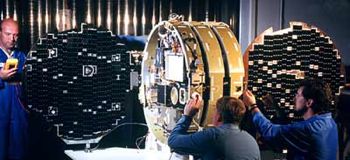 | Teledesic 1 Credit: Manufacturer Image |
 | IBEX Credit: Manufacturer Image |
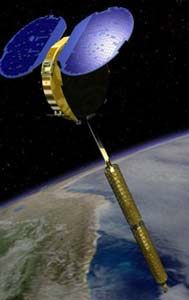 | MUBLCOM Credit: Manufacturer Image |
 | Orbcomm B5 Credit: Manufacturer Image |
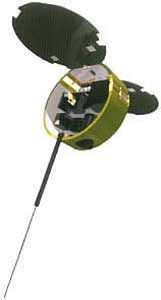 | Orbview-1 Credit: Manufacturer Image |
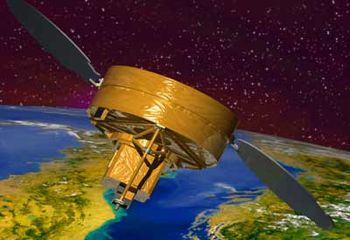 | QuikTOMS Credit: Manufacturer Image |
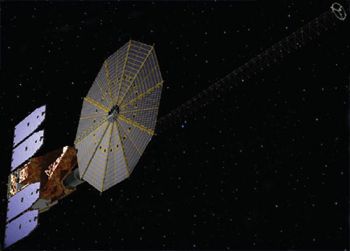 | ST 8 Credit: Manufacturer Image |
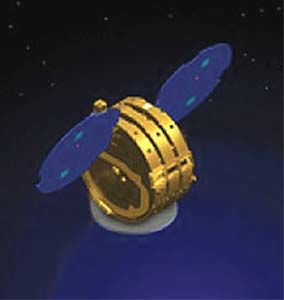 | Tacsat 1 Credit: Manufacturer Image |
1991 July 17 - . 01:46 GMT - . Launch Site: Kourou. Launch Complex: Kourou ELA2. LV Family: Ariane. Launch Vehicle: Ariane 40.
- Orbcomm-X - . Payload: ERS 1 Orbcomm X. Mass: 22 kg (48 lb). Nation: USA. Agency: ESIEESPA. Class: Technology. Type: Communications technology satellite. Spacecraft Bus: MicroStar. Spacecraft: Orbcomm. USAF Sat Cat: 21576 . COSPAR: 1991-050C. Apogee: 771 km (479 mi). Perigee: 764 km (474 mi). Inclination: 98.50 deg. Period: 100.20 min. Store and forward communication..
1993 April 25 - . 13:56 GMT - . Launch Site: Point Arguello. Launch Complex: Point Arguello WADZ. Launch Pad: Aircraft from Edwards.. Launch Platform: NB-52 008. Launch Vehicle: Pegasus.
- Orbcomm OXP-2 - . Payload: VSUM. Mass: 22 kg (48 lb). Nation: USA. Agency: Orbcomm. Program: Orbcomm. Class: Communications. Type: Civilian communications satellite. Spacecraft Bus: MicroStar. Spacecraft: Orbcomm. USAF Sat Cat: 22639 . COSPAR: 1993-026B. Apogee: 843 km (524 mi). Perigee: 752 km (468 mi). Inclination: 69.92 deg. Period: 100.74 min. Air dropped in Point Arguello WADZ..
1995 April 3 - . 13:48 GMT - . Launch Site: Point Arguello. Launch Complex: Point Arguello WADZ. Launch Pad: Aircraft from Vandenberg.. Launch Platform: L-1011. LV Family: Pegasus. Launch Vehicle: Pegasus H.
- Orbcomm F1 - . Payload: Orbcomm s/n FM1. Mass: 40 kg (88 lb). Nation: USA. Agency: Orbcomm. Program: Orbcomm. Class: Communications. Type: Civilian communications satellite. Spacecraft: Microstar. USAF Sat Cat: 23545 . COSPAR: 1995-017A. Apogee: 747 km (464 mi). Perigee: 728 km (452 mi). Inclination: 69.98 deg. Period: 99.56 min. Commercial communications testbed. Plane F. Ascending node 199.1 degrees. Air dropped in Point Arguello WADZ..
- Orbcomm F2 - . Payload: Orbcomm s/n FM2. Mass: 40 kg (88 lb). Nation: USA. Agency: Orbcomm. Program: Orbcomm. Class: Communications. Type: Civilian communications satellite. Spacecraft: Microstar. USAF Sat Cat: 23546 . COSPAR: 1995-017B. Apogee: 747 km (464 mi). Perigee: 728 km (452 mi). Inclination: 69.98 deg. Period: 99.56 min. Commercial communications testbed. Plane F. Ascending node 198.5 degrees. Air dropped in Point Arguello WADZ..
- Orbview-1 - . Payload: Microlab 1. Mass: 74 kg (163 lb). Nation: USA. Agency: Orbimage. Program: Orbview. Class: Earth. Type: Atmosphere satellite. Spacecraft: Microstar. USAF Sat Cat: 23547 . COSPAR: 1995-017C. Apogee: 747 km (464 mi). Perigee: 733 km (455 mi). Inclination: 70.00 deg. Period: 99.60 min. Lightning mapper; GPS radio occultation. Air dropped in Point Arguello WADZ..
1997 December 23 - . 19:11 GMT - . Launch Site: Wallops Island. Launch Complex: Wallops Island DZ. Launch Pad: RW04/22. Launch Platform: L-1011. LV Family: Pegasus. Launch Vehicle: Pegasus XL/HAPS.
- Orbcomm A1 - . Payload: Orbcomm s/n FM5. Mass: 43 kg (94 lb). Nation: USA. Agency: Orbcomm. Manufacturer: Germantown. Program: Orbcomm. Class: Communications. Type: Civilian communications satellite. Spacecraft: Microstar. USAF Sat Cat: 25112 . COSPAR: 1997-084A. Apogee: 823 km (511 mi). Perigee: 812 km (504 mi). Inclination: 45.03 deg. Period: 101.26 min. Plane A. Ascending node 297.7 degrees. Air dropped in Wallops Island DZ..
- Orbcomm A7 - . Payload: Orbcomm s/n FM11. Mass: 43 kg (94 lb). Nation: USA. Agency: Orbcomm. Manufacturer: Germantown. Program: Orbcomm. Class: Communications. Type: Civilian communications satellite. Spacecraft: Microstar. USAF Sat Cat: 25118 . COSPAR: 1997-084G. Apogee: 823 km (511 mi). Perigee: 813 km (505 mi). Inclination: 45.02 deg. Period: 101.26 min. Plane A. Ascending node 301.2 degrees. Air dropped in Wallops Island DZ..
- Orbcomm A8 - . Payload: Orbcomm s/n FM12. Mass: 43 kg (94 lb). Nation: USA. Agency: Orbcomm. Manufacturer: Germantown. Program: Orbcomm. Class: Communications. Type: Civilian communications satellite. Spacecraft: Microstar. USAF Sat Cat: 25119 . COSPAR: 1997-084H. Apogee: 823 km (511 mi). Perigee: 812 km (504 mi). Inclination: 45.02 deg. Period: 101.26 min. Plane A. Ascending node 301.2 degrees. Air dropped in Wallops Island DZ..
- Orbcomm A6 - . Payload: Orbcomm s/n FM10. Mass: 43 kg (94 lb). Nation: USA. Agency: Orbcomm. Manufacturer: Germantown. Program: Orbcomm. Class: Communications. Type: Civilian communications satellite. Spacecraft: Microstar. USAF Sat Cat: 25117 . COSPAR: 1997-084F. Apogee: 823 km (511 mi). Perigee: 812 km (504 mi). Inclination: 45.02 deg. Period: 101.26 min. Plane A. Ascending node 301.2 degrees. Air dropped in Wallops Island DZ..
- Orbcomm A4 - . Payload: Orbcomm s/n FM8. Mass: 43 kg (94 lb). Nation: USA. Agency: Orbcomm. Manufacturer: Germantown. Program: Orbcomm. Class: Communications. Type: Civilian communications satellite. Spacecraft: Microstar. USAF Sat Cat: 25115 . COSPAR: 1997-084D. Apogee: 823 km (511 mi). Perigee: 813 km (505 mi). Inclination: 45.02 deg. Period: 101.26 min. Plane A. Ascending node 300.5 degrees. Air dropped in Wallops Island DZ..
- Orbcomm A3 - . Payload: Orbcomm s/n FM7. Mass: 43 kg (94 lb). Nation: USA. Agency: Orbcomm. Manufacturer: Germantown. Program: Orbcomm. Class: Communications. Type: Civilian communications satellite. Spacecraft: Microstar. USAF Sat Cat: 25114 . COSPAR: 1997-084C. Apogee: 822 km (510 mi). Perigee: 813 km (505 mi). Inclination: 45.03 deg. Period: 101.26 min. Plane A. Ascending node 301 degrees. Air dropped in Wallops Island DZ..
- Orbcomm A2 - . Payload: Orbcomm s/n FM6. Mass: 43 kg (94 lb). Nation: USA. Agency: Orbcomm. Manufacturer: Germantown. Program: Orbcomm. Class: Communications. Type: Civilian communications satellite. Spacecraft: Microstar. USAF Sat Cat: 25113 . COSPAR: 1997-084B. Apogee: 822 km (510 mi). Perigee: 813 km (505 mi). Inclination: 45.03 deg. Period: 101.26 min. Plane A. Ascending node 300.7 degrees. Air dropped in Wallops Island DZ..
- Orbcomm A5 - . Payload: Orbcomm s/n FM9. Mass: 43 kg (94 lb). Nation: USA. Agency: Orbcomm. Manufacturer: Germantown. Program: Orbcomm. Class: Communications. Type: Civilian communications satellite. Spacecraft: Microstar. USAF Sat Cat: 25116 . COSPAR: 1997-084E. Apogee: 822 km (510 mi). Perigee: 814 km (505 mi). Inclination: 45.02 deg. Period: 101.26 min. Plane A. Ascending node 301 degrees. Air dropped in Wallops Island DZ..
1998 February 10 - . 13:20 GMT - . Launch Site: Vandenberg. Launch Complex: Vandenberg 576E. LV Family: Taurus. Launch Vehicle: Taurus 2210.
- Orbcomm G1 - . Payload: Orbcomm s/n FM3. Mass: 43 kg (94 lb). Nation: USA. Agency: Orbcomm. Manufacturer: Germantown. Program: Orbcomm. Class: Communications. Type: Civilian communications satellite. Spacecraft: Microstar. USAF Sat Cat: 25158 . COSPAR: 1998-007B. Apogee: 874 km (543 mi). Perigee: 781 km (485 mi). Inclination: 107.99 deg. Period: 101.46 min. Plane G. Ascending node 297.9 degrees..
- Orbcomm G2 - . Payload: Orbcomm s/n FM4. Mass: 43 kg (94 lb). Nation: USA. Agency: Orbcomm. Manufacturer: Germantown. Program: Orbcomm. Class: Communications. Type: Civilian communications satellite. Spacecraft: Microstar. USAF Sat Cat: 25159 . COSPAR: 1998-007C. Apogee: 871 km (541 mi). Perigee: 783 km (486 mi). Inclination: 107.99 deg. Period: 101.45 min. Plane G. Ascending node 298.1 degrees..
1998 August 2 - . 16:24 GMT - . Launch Site: Wallops Island. Launch Complex: Wallops Island DZ. Launch Pad: RW04/22. Launch Platform: L-1011. LV Family: Pegasus. Launch Vehicle: Pegasus XL/HAPS.
- Orbcomm B5 - . Payload: Orbcomm s/n FM17. Mass: 22 kg (48 lb). Nation: USA. Agency: Orbcomm. Manufacturer: Germantown. Program: Orbcomm. Class: Communications. Type: Civilian communications satellite. Spacecraft Bus: MicroStar. Spacecraft: Orbcomm. USAF Sat Cat: 25413 . COSPAR: 1998-046A. Apogee: 824 km (512 mi). Perigee: 813 km (505 mi). Inclination: 45.00 deg. Period: 101.28 min. Plane B. Ascending node 61 degrees. Air dropped in Wallops Island DZ..
- Orbcomm B3 - . Payload: Orbcomm s/n FM15. Mass: 22 kg (48 lb). Nation: USA. Agency: Orbcomm. Manufacturer: Germantown. Program: Orbcomm. Class: Communications. Type: Civilian communications satellite. Spacecraft Bus: MicroStar. Spacecraft: Orbcomm. USAF Sat Cat: 25418 . COSPAR: 1998-046F. Apogee: 825 km (512 mi). Perigee: 812 km (504 mi). Inclination: 45.01 deg. Period: 101.28 min. Plane B. Ascending node 60 degrees. Air dropped in Wallops Island DZ..
- Orbcomm B6 - . Payload: Orbcomm s/n FM18. Mass: 22 kg (48 lb). Nation: USA. Agency: Orbcomm. Manufacturer: Germantown. Program: Orbcomm. Class: Communications. Type: Civilian communications satellite. Spacecraft Bus: MicroStar. Spacecraft: Orbcomm. USAF Sat Cat: 25414 . COSPAR: 1998-046B. Apogee: 827 km (513 mi). Perigee: 810 km (500 mi). Inclination: 45.00 deg. Period: 101.28 min. Plane B. Ascending node 59.7 degrees. Air dropped in Wallops Island DZ..
- Orbcomm B7 - . Payload: Orbcomm s/n FM19. Mass: 22 kg (48 lb). Nation: USA. Agency: Orbcomm. Manufacturer: Germantown. Program: Orbcomm. Class: Communications. Type: Civilian communications satellite. Spacecraft Bus: MicroStar. Spacecraft: Orbcomm. USAF Sat Cat: 25415 . COSPAR: 1998-046C. Apogee: 828 km (514 mi). Perigee: 809 km (502 mi). Inclination: 45.00 deg. Period: 101.28 min. Plane B. Ascending node 61.1 degrees. Air dropped in Wallops Island DZ..
- Orbcomm B2 - . Payload: Orbcomm s/n FM14. Mass: 22 kg (48 lb). Nation: USA. Agency: Orbcomm. Manufacturer: Germantown. Program: Orbcomm. Class: Communications. Type: Civilian communications satellite. Spacecraft Bus: MicroStar. Spacecraft: Orbcomm. USAF Sat Cat: 25419 . COSPAR: 1998-046G. Apogee: 826 km (513 mi). Perigee: 811 km (503 mi). Inclination: 45.00 deg. Period: 101.28 min. Plane B. Ascending node 60.4 degrees. Air dropped in Wallops Island DZ..
- Orbcomm B1 - . Payload: Orbcomm s/n FM13. Mass: 22 kg (48 lb). Nation: USA. Agency: Orbcomm. Manufacturer: Germantown. Program: Orbcomm. Class: Communications. Type: Civilian communications satellite. Spacecraft Bus: MicroStar. Spacecraft: Orbcomm. USAF Sat Cat: 25420 . COSPAR: 1998-046H. Apogee: 824 km (512 mi). Perigee: 813 km (505 mi). Inclination: 45.00 deg. Period: 101.27 min. Plane B. Ascending node 60.4 degrees. Air dropped in Wallops Island DZ..
- Orbcomm B8 - . Payload: Orbcomm s/n FM20. Mass: 22 kg (48 lb). Nation: USA. Agency: Orbcomm. Manufacturer: Germantown. Program: Orbcomm. Class: Communications. Type: Civilian communications satellite. Spacecraft Bus: MicroStar. Spacecraft: Orbcomm. USAF Sat Cat: 25416 . COSPAR: 1998-046D. Apogee: 826 km (513 mi). Perigee: 811 km (503 mi). Inclination: 45.00 deg. Period: 101.28 min. Plane B. Ascending node 61.2 degrees. Air dropped in Wallops Island DZ..
- Orbcomm B4 - . Payload: Orbcomm s/n FM16. Mass: 22 kg (48 lb). Nation: USA. Agency: Orbcomm. Manufacturer: Germantown. Program: Orbcomm. Class: Communications. Type: Civilian communications satellite. Spacecraft Bus: MicroStar. Spacecraft: Orbcomm. USAF Sat Cat: 25417 . COSPAR: 1998-046E. Apogee: 825 km (512 mi). Perigee: 812 km (504 mi). Inclination: 45.00 deg. Period: 101.28 min. Plane B. Ascending node 59.9 degrees. Air dropped in Wallops Island DZ..
1998 September 23 - . 05:06 GMT - . Launch Site: Wallops Island. Launch Complex: Wallops Island DZ. Launch Pad: RW04/22. Launch Platform: L-1011. LV Family: Pegasus. Launch Vehicle: Pegasus XL/HAPS.
- Orbcomm C1 - . Payload: Orbcomm s/n FM21. Mass: 22 kg (48 lb). Nation: USA. Agency: Orbcomm. Manufacturer: Germantown. Program: Orbcomm. Class: Communications. Type: Civilian communications satellite. Spacecraft Bus: MicroStar. Spacecraft: Orbcomm. USAF Sat Cat: 25475 . COSPAR: 1998-053A. Apogee: 825 km (512 mi). Perigee: 811 km (503 mi). Inclination: 45.01 deg. Period: 101.27 min. Plane C. Ascending node 181.6 degrees. Air dropped in Wallops Island DZ..
- Orbcomm C7 - . Payload: Orbcomm s/n FM27. Mass: 22 kg (48 lb). Nation: USA. Agency: Orbcomm. Manufacturer: Germantown. Program: Orbcomm. Class: Communications. Type: Civilian communications satellite. Spacecraft Bus: MicroStar. Spacecraft: Orbcomm. USAF Sat Cat: 25481 . COSPAR: 1998-053G. Apogee: 823 km (511 mi). Perigee: 813 km (505 mi). Inclination: 45.02 deg. Period: 101.27 min. Plane C. Ascending node 181.6 degrees. Air dropped in Wallops Island DZ..
- Orbcomm C8 - . Payload: Orbcomm s/n FM28. Mass: 22 kg (48 lb). Nation: USA. Agency: Orbcomm. Manufacturer: Germantown. Program: Orbcomm. Class: Communications. Type: Civilian communications satellite. Spacecraft Bus: MicroStar. Spacecraft: Orbcomm. USAF Sat Cat: 25482 . COSPAR: 1998-053H. Apogee: 824 km (512 mi). Perigee: 813 km (505 mi). Inclination: 45.03 deg. Period: 101.27 min. Plane C. Ascending node 181.7 degrees. Air dropped in Wallops Island DZ..
- Orbcomm C6 - . Payload: Orbcomm s/n FM26. Mass: 22 kg (48 lb). Nation: USA. Agency: Orbcomm. Manufacturer: Germantown. Program: Orbcomm. Class: Communications. Type: Civilian communications satellite. Spacecraft Bus: MicroStar. Spacecraft: Orbcomm. USAF Sat Cat: 25480 . COSPAR: 1998-053F. Apogee: 825 km (512 mi). Perigee: 811 km (503 mi). Inclination: 45.01 deg. Period: 101.27 min. Plane C. Ascending node 181.5 degrees. Air dropped in Wallops Island DZ..
- Orbcomm C5 - . Payload: Orbcomm s/n FM25. Mass: 22 kg (48 lb). Nation: USA. Agency: Orbcomm. Manufacturer: Germantown. Program: Orbcomm. Class: Communications. Type: Civilian communications satellite. Spacecraft Bus: MicroStar. Spacecraft: Orbcomm. USAF Sat Cat: 25479 . COSPAR: 1998-053E. Apogee: 824 km (512 mi). Perigee: 813 km (505 mi). Inclination: 45.01 deg. Period: 101.27 min. Plane C. Ascending node 181.5 degrees. Air dropped in Wallops Island DZ..
- Orbcomm C4 - . Payload: Orbcomm s/n FM24. Mass: 22 kg (48 lb). Nation: USA. Agency: Orbcomm. Manufacturer: Germantown. Program: Orbcomm. Class: Communications. Type: Civilian communications satellite. Spacecraft Bus: MicroStar. Spacecraft: Orbcomm. USAF Sat Cat: 25478 . COSPAR: 1998-053D. Apogee: 822 km (510 mi). Perigee: 814 km (505 mi). Inclination: 45.01 deg. Period: 101.27 min. Plane C. Ascending node 181.7 degrees. Air dropped in Wallops Island DZ..
- Orbcomm C3 - . Payload: Orbcomm s/n FM23. Mass: 22 kg (48 lb). Nation: USA. Agency: Orbcomm. Manufacturer: Germantown. Program: Orbcomm. Class: Communications. Type: Civilian communications satellite. Spacecraft Bus: MicroStar. Spacecraft: Orbcomm. USAF Sat Cat: 25477 . COSPAR: 1998-053C. Apogee: 823 km (511 mi). Perigee: 813 km (505 mi). Inclination: 45.02 deg. Period: 101.27 min. Plane C. Ascending node 181.8 degrees. Air dropped in Wallops Island DZ..
- Orbcomm C2 - . Payload: Orbcomm s/n FM22. Mass: 22 kg (48 lb). Nation: USA. Agency: Orbcomm. Manufacturer: Germantown. Program: Orbcomm. Class: Communications. Type: Civilian communications satellite. Spacecraft Bus: MicroStar. Spacecraft: Orbcomm. USAF Sat Cat: 25476 . COSPAR: 1998-053B. Apogee: 823 km (511 mi). Perigee: 814 km (505 mi). Inclination: 45.02 deg. Period: 101.27 min. Plane C. Ascending node 178 degrees. Air dropped in Wallops Island DZ..
1999 May 18 - . 05:09 GMT - . Launch Site: Point Arguello. Launch Complex: Point Arguello WADZ. Launch Pad: Aircraft from Vandenberg.. Launch Platform: L-1011. LV Family: Pegasus. Launch Vehicle: Pegasus XL/HAPS.
- MUBLCOM - .
Mass: 43 kg (94 lb). Nation: USA.
Agency: US Army.
Manufacturer: Germantown.
Class: Communications.
Type: Military communications satellite. Spacecraft: Microstar.
USAF Sat Cat: 25736 . COSPAR: 1999-026B. Apogee: 745 km (462 mi). Perigee: 738 km (458 mi). Inclination: 97.70 deg. Period: 99.70 min.
After deploying the TERRIERS satellite, the conical Payload Adapter Fitting (1998-26E) was jettisoned at 05:21 GMT, leaving the disk-shaped MUBLCOM satellite attached to the Pegasus XL PRIMEX HAPS-Lite stage. The second HAPS burn at 05:22 GMT raised apogee to 775 km, followed by a third, apogee burn at 06:10 GMT which circularised the orbit. MUBLCOM was deployed to a 769 km x 776 km x 97.7 degree orbit. The final HAPS burn then placed the depleted HAPS stage in a lower 388 km x 722 km x 97.1 degree disposal orbit. MUBLCOM (Multiple beam Beyond Line-of-sight Communications) was an experimental satellite funded by DARPA and managed by the US Army's Communications-Electronics Command (CECOM) at Ft Monmouth, New Jersey. It was built by Orbital Sciences using the Microstar (Orbcomm type) bus and carries a payload testing hand-held radio satellite communications for the armed forces.
Six years later MUBLCOM was the target for the DART Autonomous Rendezvous Technology mission. On April 16, 2005, DART closed within 100 m of MUBLCOM satellite, then evidently began a series of out-of-control maneuvers resulting in an in-space collission and MUBLCOM being bumped into a 3 to 5 km higher orbit. DART was deorbited while MUBLCOM, still functioned, continued on in space. Air dropped in Point Arguello WADZ.
1999 December 4 - . 18:53 GMT - . Launch Site: Wallops Island. Launch Complex: Wallops Island DZ. Launch Pad: RW04/22. Launch Platform: L-1011. LV Family: Pegasus. Launch Vehicle: Pegasus XL/HAPS.
- Orbcomm FM30 - . Mass: 45 kg (99 lb). Nation: USA. Agency: Orbcomm. Manufacturer: Germantown. Program: Orbcomm. Class: Communications. Type: Civilian communications satellite. Spacecraft Bus: MicroStar. Spacecraft: Orbcomm. USAF Sat Cat: 25980 . COSPAR: 1999-065A. Apogee: 798 km (495 mi). Perigee: 790 km (490 mi). Inclination: 45.00 deg. Period: 100.70 min. Seven Orbcomms launched, rather than eight as on previous flights. Air dropped in Wallops Island DZ..
- Orbcomm FM31 - . Mass: 45 kg (99 lb). Nation: USA. Agency: Orbcomm. Manufacturer: Germantown. Program: Orbcomm. Class: Communications. Type: Civilian communications satellite. Spacecraft Bus: MicroStar. Spacecraft: Orbcomm. USAF Sat Cat: 25981 . COSPAR: 1999-065B. Apogee: 798 km (495 mi). Perigee: 790 km (490 mi). Inclination: 45.00 deg. Period: 100.70 min. Air dropped in Wallops Island DZ..
- Orbcomm FM32 - . Mass: 45 kg (99 lb). Nation: USA. Agency: Orbcomm. Manufacturer: Germantown. Program: Orbcomm. Class: Communications. Type: Civilian communications satellite. Spacecraft Bus: MicroStar. Spacecraft: Orbcomm. USAF Sat Cat: 25982 . COSPAR: 1999-065C. Apogee: 798 km (495 mi). Perigee: 788 km (489 mi). Inclination: 45.00 deg. Period: 100.70 min. Air dropped in Wallops Island DZ..
- Orbcomm FM33 - . Mass: 45 kg (99 lb). Nation: USA. Agency: Orbcomm. Manufacturer: Germantown. Program: Orbcomm. Class: Communications. Type: Civilian communications satellite. Spacecraft Bus: MicroStar. Spacecraft: Orbcomm. USAF Sat Cat: 25983 . COSPAR: 1999-065D. Apogee: 793 km (492 mi). Perigee: 780 km (480 mi). Inclination: 45.00 deg. Period: 100.60 min. Air dropped in Wallops Island DZ..
- Orbcomm FM34 - . Mass: 45 kg (99 lb). Nation: USA. Agency: Orbcomm. Manufacturer: Germantown. Program: Orbcomm. Class: Communications. Type: Civilian communications satellite. Spacecraft Bus: MicroStar. Spacecraft: Orbcomm. USAF Sat Cat: 25984 . COSPAR: 1999-065E. Apogee: 795 km (493 mi). Perigee: 792 km (492 mi). Inclination: 45.00 deg. Period: 100.70 min. Air dropped in Wallops Island DZ..
- Orbcomm FM35 - . Mass: 45 kg (99 lb). Nation: USA. Agency: Orbcomm. Manufacturer: Germantown. Program: Orbcomm. Class: Communications. Type: Civilian communications satellite. Spacecraft Bus: MicroStar. Spacecraft: Orbcomm. USAF Sat Cat: 25985 . COSPAR: 1999-065F. Apogee: 797 km (495 mi). Perigee: 791 km (491 mi). Inclination: 45.00 deg. Period: 100.70 min. Air dropped in Wallops Island DZ..
- Orbcomm FM36 - . Mass: 45 kg (99 lb). Nation: USA. Agency: Orbcomm. Manufacturer: Germantown. Program: Orbcomm. Class: Communications. Type: Civilian communications satellite. Spacecraft Bus: MicroStar. Spacecraft: Orbcomm. USAF Sat Cat: 25986 . COSPAR: 1999-065G. Apogee: 797 km (495 mi). Perigee: 790 km (490 mi). Inclination: 45.00 deg. Period: 100.70 min. Air dropped in Wallops Island DZ..
2001 September 21 - . 18:49 GMT - . Launch Site: Vandenberg. Launch Complex: Vandenberg 576E. LV Family: Taurus. Launch Vehicle: Taurus 2110. FAILURE: A problem a few seconds after first stage separation caused the rocket to go off course; it recovered and the remainder of the stages fired, but final cutoff velocity was too low to reach a sustainable orbit..
- SBD - .
Mass: 368 kg (811 lb). Nation: USA.
Agency: Orbimage.
Manufacturer: OSC.
Class: Technology.
Type: Navigation technology satellite. Spacecraft Bus: Microstar.
Spacecraft: SBD.
COSPAR: F010921C.
SBD, the Orbital Sciences' Special Bus Design. The 73 kg satellite was a test version of an enlarged Microstar bus. It would have remained attached to the third stage, together with two Celestis burial canisters containing cremated human remains, and an experimental third stage avionics box.
- QuikTOMS - .
Mass: 368 kg (811 lb). Nation: USA.
Agency: Orbimage.
Manufacturer: OSC.
Class: Earth.
Type: Ionosphere satellite. Spacecraft: Microstar.
COSPAR: F010921B.
The QuikTOMS satellite was a NASA-GSFC project carrying the TOMS-5 ozone mapper. QuikTOMS used a 168 kg double Microstar bus and was to have replaced TOMS instruments on a delayed Russian weather satellite and the failed ADEOS. The loss of QuikTOMS put a hole in NASA's attempts to monitor the ozone layer.
2006 April 15 - . 01:40 GMT - . Launch Site: Vandenberg. Launch Complex: Vandenberg SLC8. LV Family: Minuteman. Launch Vehicle: Minotaur 1.
- Formosat 3A FM6 - .
Mass: 70 kg (154 lb). Nation: Taiwan.
Agency: NSPO.
Manufacturer: OSC.
Class: Technology.
Type: Navigation technology satellite. Spacecraft: MicroStar.
USAF Sat Cat: 29047 . COSPAR: 2006-011A. Apogee: 538 km (334 mi). Perigee: 496 km (308 mi). Inclination: 72.00 deg. Period: 95.00 min.
FORMOSAT-3 consisted of six small 62 kg Orbcomm-type satellites with GPS receivers which were to measure atmospheric conditions by studying the effect of the atmosphere on GPS satellite signals passing through it. The satellites, also known as COSMIC (Constellation Observing System for Meteorology, Ionosphere and Climate), each raised their orbits over several months, all but one reaching operational orbits of around 770 x 840 km by September 2007.
- Formosat 3B FM1 - . Mass: 70 kg (154 lb). Nation: Taiwan. Agency: NSPO. Manufacturer: OSC. Class: Technology. Type: Navigation technology satellite. Spacecraft: MicroStar. USAF Sat Cat: 29048 . COSPAR: 2006-011B. Apogee: 541 km (336 mi). Perigee: 500 km (310 mi). Inclination: 72.00 deg. Period: 95.00 min.
- Formosat 3C FM5 - . Mass: 70 kg (154 lb). Nation: Taiwan. Agency: NSPO. Manufacturer: OSC. Class: Technology. Type: Navigation technology satellite. Spacecraft: MicroStar. USAF Sat Cat: 29049 . COSPAR: 2006-011C. Apogee: 681 km (423 mi). Perigee: 567 km (352 mi). Inclination: 72.00 deg. Period: 97.20 min.
- Formosat 3D FM3 - . Mass: 70 kg (154 lb). Nation: Taiwan. Agency: NSPO. Manufacturer: OSC. Class: Technology. Type: Navigation technology satellite. Spacecraft: MicroStar. USAF Sat Cat: 29050 . COSPAR: 2006-011D. Apogee: 538 km (334 mi). Perigee: 496 km (308 mi). Inclination: 72.00 deg. Period: 95.00 min. Became stuck in intermediate 675 x 750 km due to solar panel failure..
- Formosat 3E FM4 - . Mass: 70 kg (154 lb). Nation: Taiwan. Agency: NSPO. Manufacturer: OSC. Class: Technology. Type: Navigation technology satellite. Spacecraft: MicroStar. USAF Sat Cat: 29051 . COSPAR: 2006-011E. Apogee: 538 km (334 mi). Perigee: 496 km (308 mi). Inclination: 72.00 deg. Period: 95.00 min.
- Formosat 3F FM2 - . Mass: 70 kg (154 lb). Nation: Taiwan. Agency: NSPO. Manufacturer: OSC. Class: Technology. Type: Navigation technology satellite. Spacecraft: MicroStar. USAF Sat Cat: 29052 . COSPAR: 2006-011F. Apogee: 542 km (336 mi). Perigee: 497 km (308 mi). Inclination: 72.00 deg. Period: 95.00 min.
2008 June 19 - . 06:36 GMT - . Launch Site: Kapustin Yar. Launch Complex: Kapustin Yar LC107/1. LV Family: R-14. Launch Vehicle: Kosmos 11K65M.
- Orbcomm FM 29 - . Mass: 115 kg (253 lb). Nation: USA. Agency: Orbcomm. Program: Orbcomm. Class: Communications. Type: Civilian communications satellite. Spacecraft Bus: MicroStar. Spacecraft: Orbcomm. USAF Sat Cat: 33062 . COSPAR: 2008-031C. Apogee: 672 km (417 mi). Perigee: 661 km (410 mi). Inclination: 48.40 deg. Period: 98.10 min.
2008 October 19 - . 17:47 GMT - . Launch Site: Kwajalein. Launch Complex: Kwajalein DZ. Launch Pad: RW06/24. Launch Platform: L-1011. LV Family: Pegasus. Launch Vehicle: Pegasus XL.
- IBEX - . Mass: 107 kg (235 lb). Nation: USA. Agency: NASA. Manufacturer: OSC. Class: Astronomy. Type: X-ray astronomy satellite. Spacecraft: Microstar. USAF Sat Cat: 33401 . COSPAR: 2008-051A. Apogee: 281,252 km (174,761 mi). Perigee: 69,563 km (43,224 mi). Inclination: 19.23 deg. Period: 12,855.81 min. Interstellar Boundary Explorer. Mission was to map, from its high earth orbit, the boundary of the heliosphere, the point at the limits of the solar system where the solar wind is overcome by the interstellar medium. Air dropped in Kwajalein DZ..
Back to top of page
Home - Search - Browse - Alphabetic Index: 0- 1- 2- 3- 4- 5- 6- 7- 8- 9
A- B- C- D- E- F- G- H- I- J- K- L- M- N- O- P- Q- R- S- T- U- V- W- X- Y- Z
© 1997-2019 Mark Wade - Contact
© / Conditions for Use